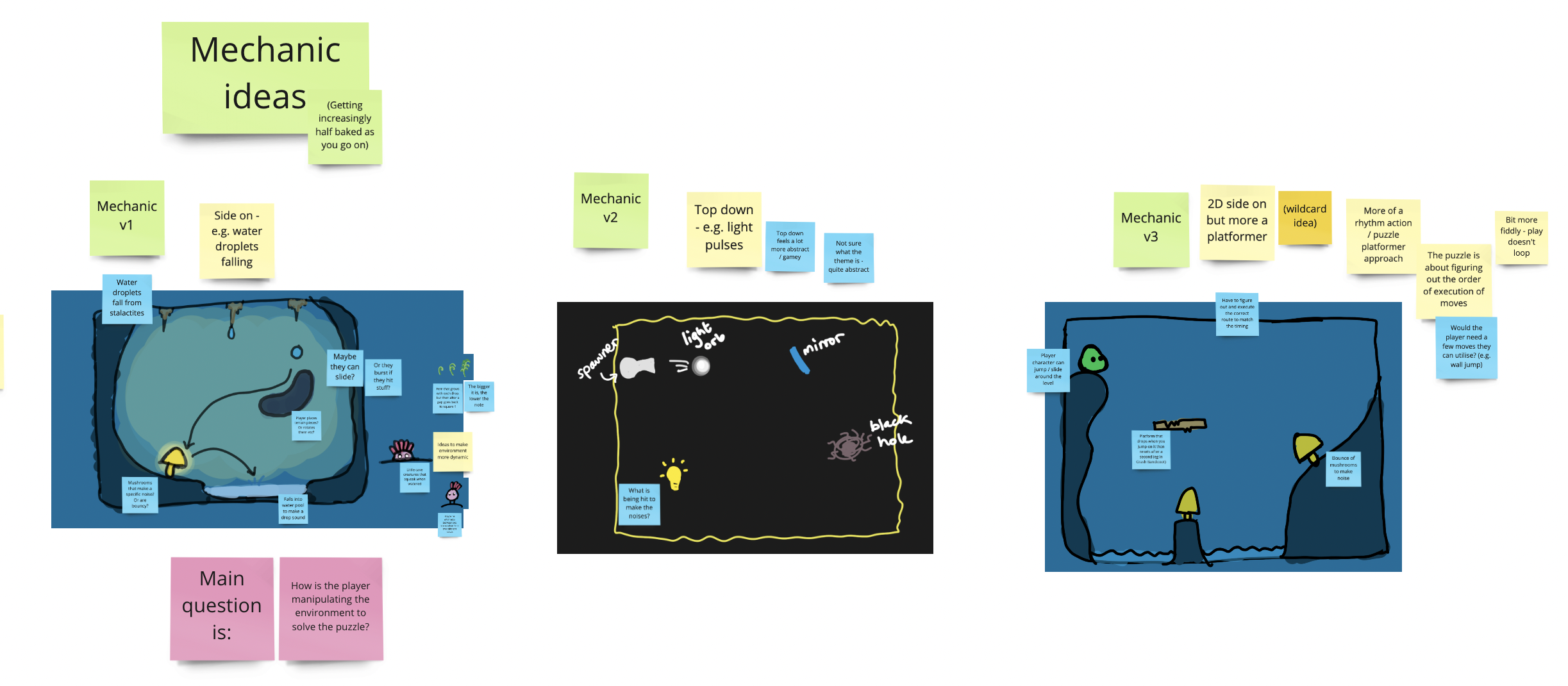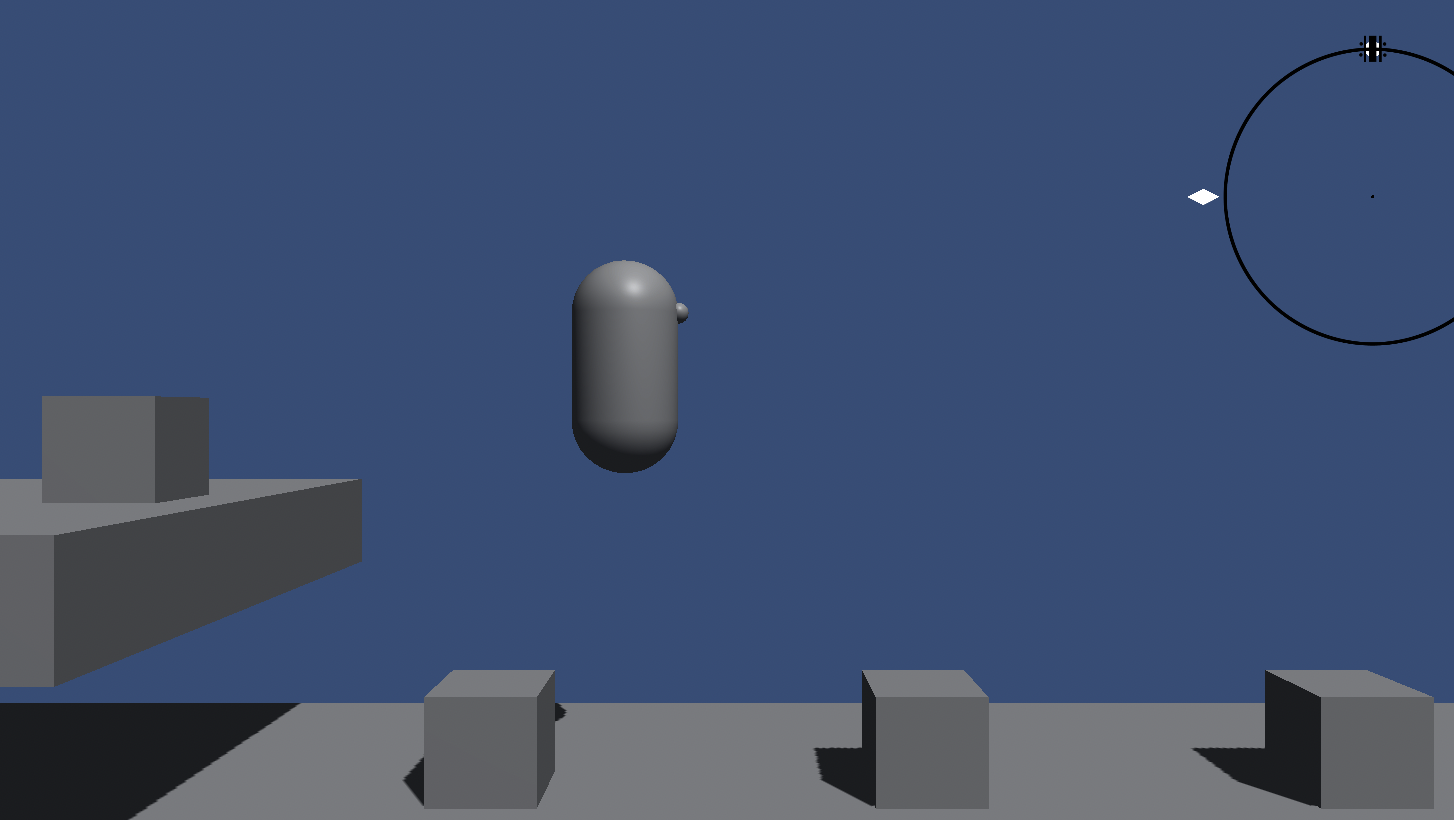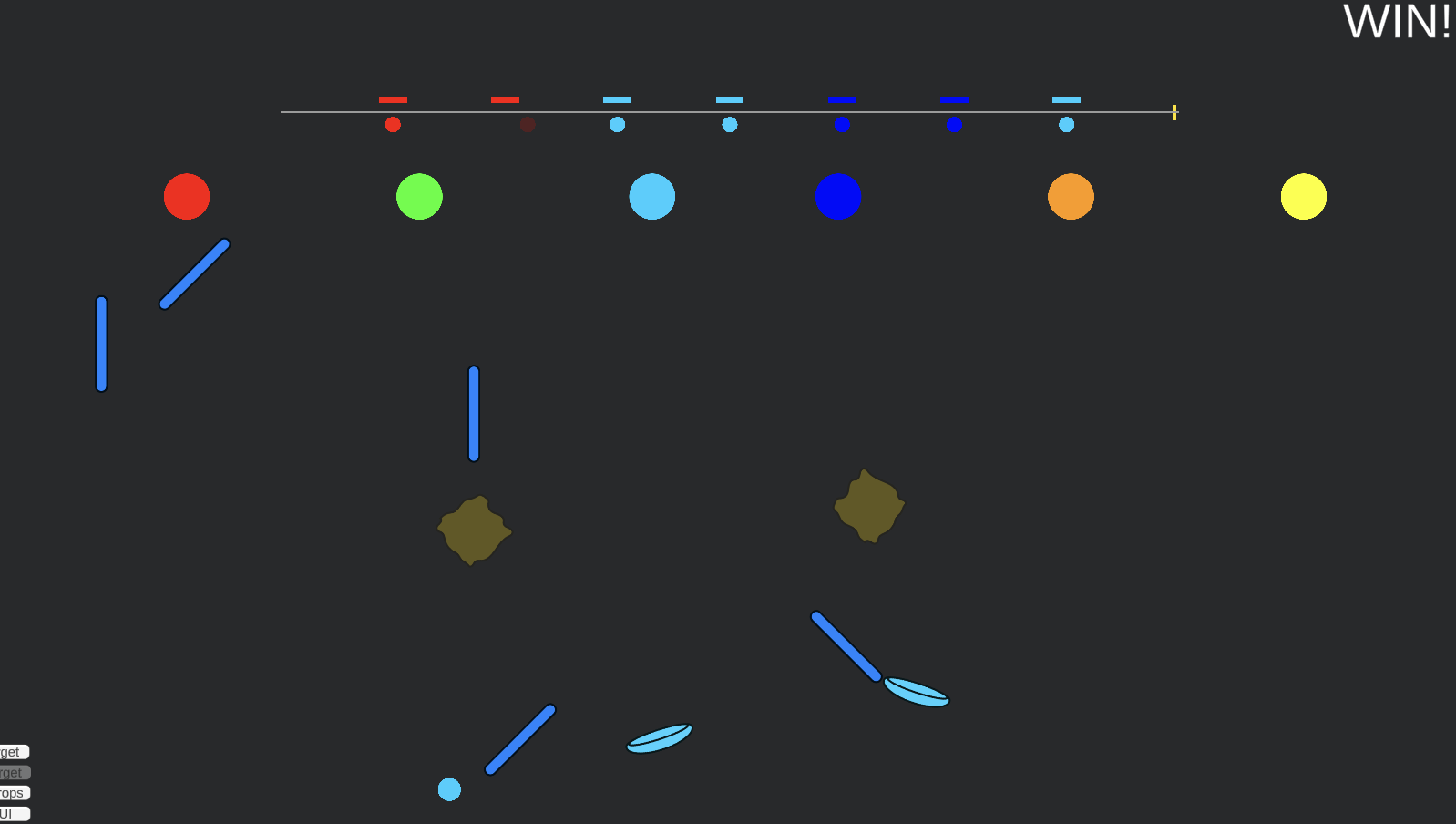Seedsong Prototyping
First Prototypes
Seedsong kicked off from a simple question between me and my collaborator, Davy Roelstraete of Chaotic Good Entertainment: can we make a puzzle game where creating a music loop is the core mechanic, and not just an added bonus?
The basic concept was to give the player a number of objects in the scene that they can use to play sounds or notes, and a target sequence that they need to hit at the correct timing. Early on we had several variants of what this game could be, as shown below:
- A side-on physics-based game, where you bounce falling objects around to create the melody
- A top-down game, where objects slide along the floor, potentially more grid-based
- A side-on platformer, where the player jumps on or activates the objects to make notes

We felt (2) was too safe - it seemed predictable, and similar to other existing games. The other two sounded interesting, so we decided to take one version each and see what we could prototype in a day or two.
In Version A, the player moved around the scene activating cubes to sound the notes. We experimented with physics and whether the player had to jump on the cubes or activate them manually, but ultimately it was just too difficult to time movements correctly.

In Version B, the player could drag and position platforms to bounce falling drops around the scene. Playing around with this prototype already felt engaging, so we decided to narrow down and iterate on this.

From here, we iterated on the concept to explore ideas and answer a few key questions. Ideas we experimented with:
- The player has to bounce a drop to hit mushrooms. Each different mushroom plays a specific note. Platform bounces don’t make a sound.
- There are multiple drops, each plays a specific note. If a drop hits anything, it plays the note.
- Object placement is limited to a grid and 45 degree angles vs free placement and rotation
- Rolling drops along platforms vs bouncing them around
- Having a limit/cost of objects vs unlimited objects vs objects being part of the environment
- Drops hitting each other and turning into a "combo" drop (which then plays a chord)
- Drops disappearing at the end of each loop vs staying in the scene
We also tried a number of objects the player could use to divert and alter the course of the drops, such as breaking platforms, trampolines, slime that slows it down, windmills and wind force.

Now, we were ready to move forward and make a more polished version of the game from scratch, and explore some level design.
Art & Audio for Chill Vibes
Needless to say, one of the big challenges on this project was audio, not made any easier by the lack of an experienced audio designer. We discussed finding someone to bring on board, but given the short timeline thought it better to finish the prototype on our own. Then if we decided to take it further, we could look for an audio designer and already have a prototype that better demonstrated the idea and the vibe.
In the early prototypes, we’d tried out a couple of different ideas for audio. We’d tried having a background beat vs having ambient noise. The beat definitely made the whole thing feel more musical, but was challenging to design levels around and required some fiddly accuracy from the player for it to sound right. For the notes, I tried out percussion, low notes (like a cello), lofi piano notes and finally xylophone, which seemed like the best fit so far.
While Davy was focused on building the new version of the game, I was developing the art style, designing characters to act as the drops, singing as they bounced off objects. Once these were in the game, the xylophone no longer seemed to match, and instead I took some vocal samples from freesound.org and edited them for the different pitches.
[video of first seed audio]
This approach felt right but it was still hard to make melodies without a full, accurate scale - I could pitch shift some of the notes, but they were becoming distorted. In the end, I recorded my own vocal samples to create a (slightly - I'm a terrible singer) more accurate full octave scale.
The final result for the look and feel of the prototype (the levels still use a mix of ambient background and musical background tracks):
Puzzle Design - The Limiting Factor?
In the end, we didn’t make a huge number of levels for the game. The final build has a few tutorials that take you through the mechanics, and a couple of more puzzle-y levels. Creating levels with decent melodies is very time consuming, and difficult with the aid of an audio designer. To build further on this game, I think we would have to find a more efficient approach to level creation.
Overall, I stand by the decision to experiment with this as a physics-based game rather than a strict/grid-based puzzle. Ultimately, we knew this would limit the precision both for the level designer and player, and the game we made feels like more of an interesting sandbox experience than something suited to puzzle levels, but I think the outcome was more interesting and unique than if we had taken a safer route. Here is a longer video of the experience, or play it for yourself in the browser:
Seedsong
Make relaxing music in a magical cave
| Status | Prototype |
| Authors | Kate Killick, Chaotic Good Entertainment |
| Genre | Puzzle |
| Tags | 2D, Cozy, Cute, Experimental, Music, Physics, Relaxing, Sandbox, Singleplayer, Unity |
Comments
Log in with itch.io to leave a comment.
It's great to know about the development of the game!